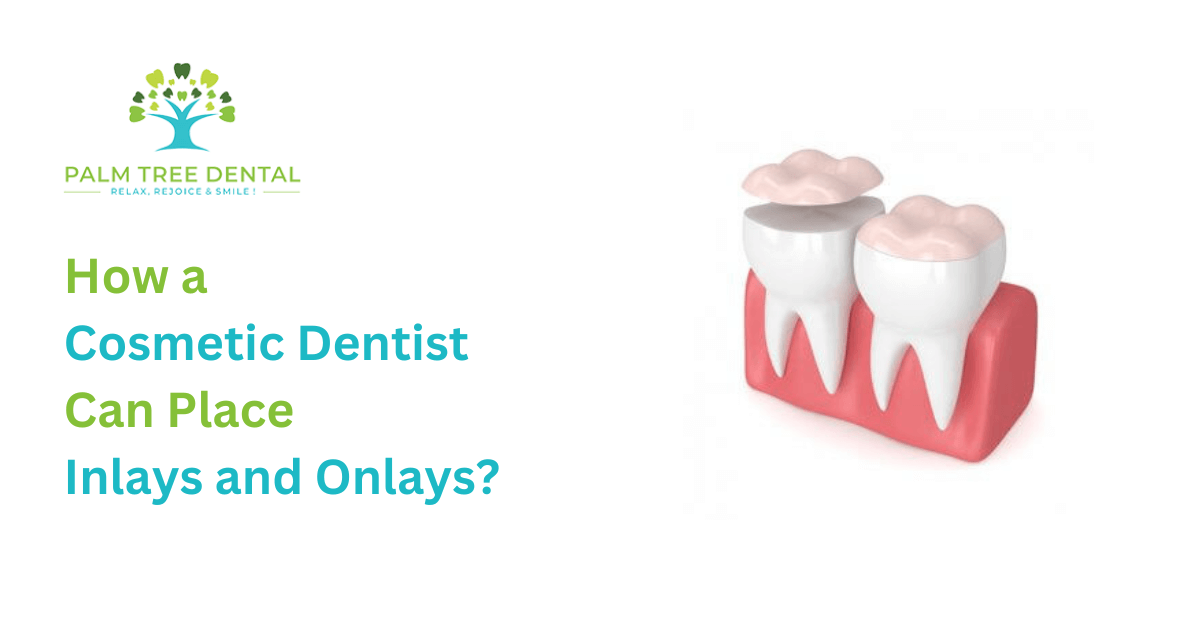In cases where a crown might be unwelcome or unneeded, a cosmetic dentist can utilize inlays and onlays instead. Onlays covers the tooth’s cusp, while inlays reinforce the tooth’s existing structure. To restore tooth functionality and integrity in a natural-looking manner, both are bonded on.
The similarities and dissimilarities of inlays, onlays, and crowns
Since inlays and onlays frequently provide outcomes similar to those of crowns, they are also referred to as partial crowns.
All of these dental restoration techniques reinforce weak teeth and make them appear natural, but inlays and onlays differ significantly from crowns in a few crucial respects.
Restoring Technique
Crowns can be used to cap teeth that have experienced severe damage or even to replace lost teeth because they completely encase the tooth up to the gum line. Inlays and onlays are applied to the existing tooth, in or on it, respectively. If the tooth structure is still intact, patients may be advised to undergo these procedures instead of crowns. Both procedures fully restore a patient’s tooth’s functionality and look, but the crown completely encases the tooth, whereas inlays and onlays blend in with the existing tooth structure.
Materials
Similar to crowns, inlays and onlays can be created of a number of materials, such as gold, ceramic, porcelain, or resin. Gold crowns and inlays were more prevalent in the past, but today most patients choose porcelain, resin, or ceramic. These components can be painted to blend in with a patient’s natural teeth. Additionally, they are highly long-lasting and require no more upkeep than natural teeth.
Preparation
The patient’s teeth must first undergo a careful examination and cleaning before receiving any inlays, onlays, or crowns. This entails removing any decayed or weak areas of the tooth. Because they have a minimum thickness, crowns have unique needs in this area. The cosmetic dentist will proceed to taking impressions if they have a solid notion of the condition of the tooth following this phase. To help the dentist understand how the patient’s teeth are positioned, a bite registration is also made.
Procedure
Inlays, onlays, and crowns all follow a fairly similar process. A milling machine that can grind all three components is commonplace in the offices of aesthetic dentists. This makes one-visit repairs possible. Pictures are shot at the appointment for the CAD/CAM milling machine. The component is then swiftly machined on location so that the cosmetic dentist may glue it before the patient departs.
The patient can make a few visits if the office lacks a milling machine. A second appointment is scheduled upon the arrival of the new inlay, onlay, or crown from the lab after photos are obtained during the initial appointment. In this instance, a temporary crown is applied to the patient between appointments.
Conclusion
If a patient has a tooth that can be saved, inlays and onlays may be utilised instead of crowns. In order to choose which option is best for them, patients should speak with a cosmetic dentist.
For an appointment at Palm Tree Dental, call Palm Tree Dental, Ingleside, Texas at 361-238-4460.

